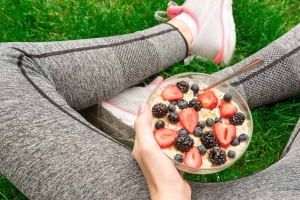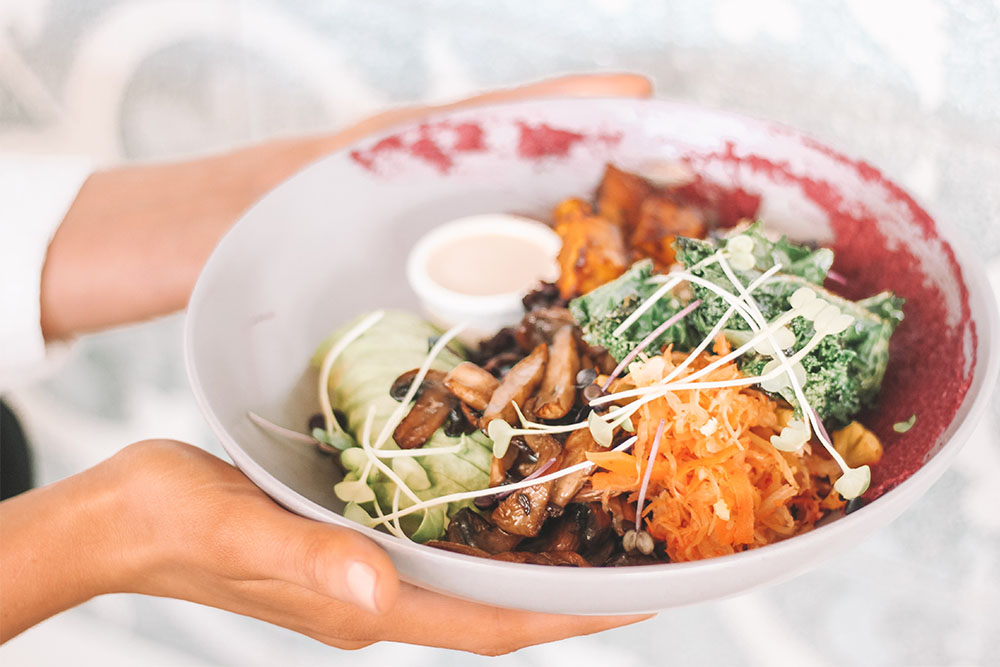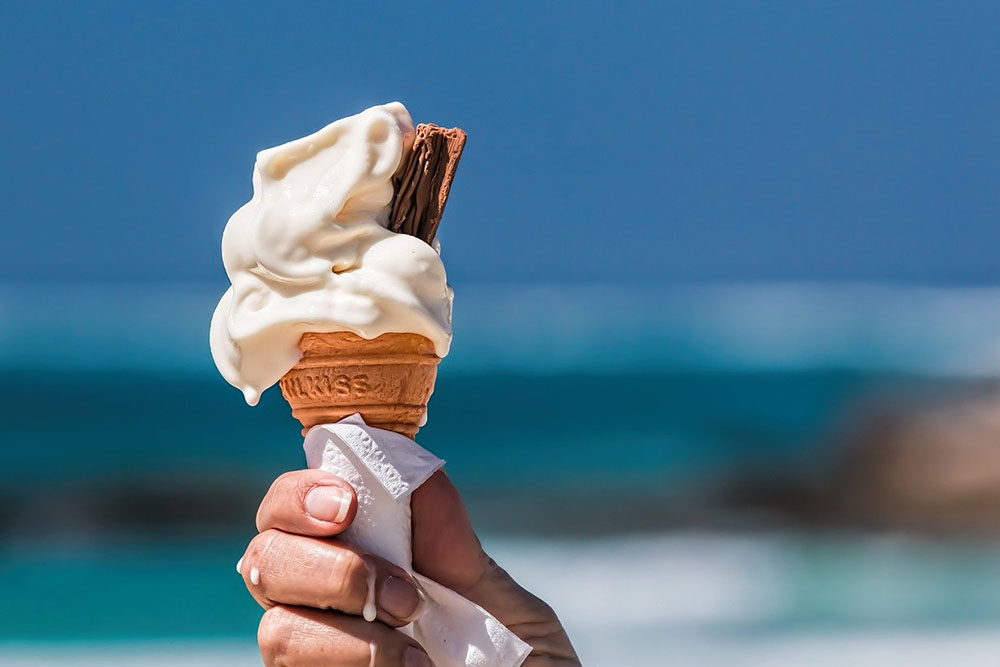Post Exercise Meal Impact On Triglyceride & Cholesterol Levels

M. Kaviani
Obesity is a leading global health problem and is associated with multiple chronic diseases including heart disease, stroke, type 2 diabetes, liver disease, and certain types of cancer (Miyazaki et al, 2002, Ross et al, 2002).
There is a significant correlation between obesity and plasma triglycerides, with heavier individuals having higher triglyceride levels. Obesity is associated with increased elevation of triglycerides after consumption of a meal highlighting the importance of studying interventions that could prevent this deleterious rise in triglycerides in obese and overweight individuals (Gill& Hardman, 2003).
Exercise the evening before a next-day meal reduces the postprandial elevation of triglycerides in the blood (Plaisance et al, 2008). Exercise only has this beneficial effect if it is followed by a period of fasting before the next-day meal. This is an unnatural condition as people most often consume food after exercising because of increased appetite and to enhance recovery from exercise. If a meal of high glycemic index is consumed after exercise, the benefits of exercise for reducing postprandial triglyceride level the following day is reduced or completely eliminated (Burton et al. 2008; Harrison et al. 2009). Meals with a low glycemic index have the potential to reduce postprandial triglycerides (Liljeberg & Björck, 2000, Gruendel S et al, 2007, De Natale et al, 2009); however, the use of low glycemic index meals in the recovery period after exercise has never been evaluated for affecting next-day postprandial triglyceride levels.
Low-GI Diets
 Low-GI diets have been associated with lower risk factors for coronary heart disease: higher high-density lipoprotein cholesterol (HDL-C), lower triglycerides and C-reactive protein (CRP) (Liu et al, 2001; Liu et al, 2002; Frost et al, 1999; Ford & Liu, 2001; Slyper et al, 2005). Two meta-analyses on the effect of low GI diets on major risk factors for CVD have shown improvements in total cholesterol with low-GI diets but no difference in HDL-cholesterol, triglycerides and LDL-cholesterol levels (Opperman et al. 2004; Kelly et al. 2004).
Low-GI diets have been associated with lower risk factors for coronary heart disease: higher high-density lipoprotein cholesterol (HDL-C), lower triglycerides and C-reactive protein (CRP) (Liu et al, 2001; Liu et al, 2002; Frost et al, 1999; Ford & Liu, 2001; Slyper et al, 2005). Two meta-analyses on the effect of low GI diets on major risk factors for CVD have shown improvements in total cholesterol with low-GI diets but no difference in HDL-cholesterol, triglycerides and LDL-cholesterol levels (Opperman et al. 2004; Kelly et al. 2004).
Harrison and colleagues (2009) evaluated recreationally active young men under three conditions.
First, a high fat meal was eaten the morning after prolonged cycling exercise performed the evening before.
Second, the same high fat meal was consumed the morning after the same prolonged exercise, but with carbohydrate drink (a high-sugar drink) consumed after the exercise to replace the calories expended during the exercise.
Third, the same high fat meal was eaten the morning after doing no exercise the prior evening; thereby serving as the “control” condition.
When exercise was carried out the evening before without any caloric (carbohydrate drink) replacement, the level of triglycerides in the blood after the next-day meal was reduced, and the level of high density lipoprotein (i.e. associated with decreased heart disease risk) was increased compared to the control condition. This positive effect was completely eliminated when the calories expended due to the exercise were replaced by the consumption of a high-sugar (high glycemic index) drink.
Related Article: Exercise And Digestive Health
Research Objectives
In this study we aim to determine whether eating a low glycemic index meal (consisting of lentils with tomato sauce) within a half hour and two hours after 90 minutes of brisk walking, is more optimal than eating a high glycemic index meal, after doing the same exercise.
Methods: Twenty three participants underwent four randomized, counter-balanced conditions, in a cross-over design, with each condition separated by one week. The washout period was one week between conditions.
Before the four conditions, the participating individuals did a preliminary study in the laboratory at the College of Kinesiology, in the University of Saskatchewan. At this time, participants confirmed their eligibility, given consent and had an opportunity to ask any questions they might have.
Resting metabolic rate measurements were done early in the morning after the participants has fasted for at least 10 hours. Then we put a hood over their head to collect their respiratory gases for 20 minutes to measure VO2, VCO2, and RER.
Across all conditions, a standardized high fat meal (designed to result in a significant elevation in insulin and triglycerides) was eaten after a 10-hour overnight fast.
Condition 1
Condition 1 involved performing exercise at 6:00 pm the evening before the high fat breakfast, followed by consumption of a high glycemic index meal (white bread, instant mashed potatoes, and egg whites to match the macronutrient profile of the lentil meal; Little et al. 2009a, 2010; Bennett et al. 2011) split into boluses consumed immediately and 2 hours after the exercise. Respiratory gases was collected during the exercise and the amount of the meal was based on the calories expended during the exercise plus 10% to account for the elevated metabolic rate typically observed during recovery (McKay et al. 2004).
Condition 2
Condition 2 was identical, except a low glycemic index meal (lentils and tomato sauce; Little et al. 2009a, 2010) was consumed post exercise. Both the high and low glycemic index meals to be used in the first 2 conditions have been developed, tested and used previously by the researchers (Little et al. 2009a, 2010; Bennett et al. 2011).
Condition 3
Condition 3 involved the same exercise but without a meal.
Condition 4
Condition 4 involved no exercise and no meal and was the “control” condition.
In each of these conditions, the participating individuals came back to the laboratory the next morning. Immediately before and at 30 min, 1 h, 2 h, 4 h, and 6 h after the morning meal (i.e. the high fat breakfast) in each condition (Harrison et al. 2009), the following data was collected: respiratory gases (oxygen uptake, carbon dioxide output, and respiratory exchange rate) for 20 minutes to estimate fat oxidation (Pinkoski et al. 2006).
Study Protocol – Exercise Sessions and Dietary Intake:
The evening exercise session (starting at 6:00pm and ending at 7:30pm) involved 90 minutes of treadmill brisk walking performed at an intensity corresponding to 50% of peak oxygen consumption, estimated through the preliminary exercise test. Respiratory gases was measured using a metabolic cart during the first exercise session in order to estimate calories expended. The amount of food eaten by the participant after the exercise session was matched the calories expended (i.e. Kcal) with an additional 10% given to account for elevation of metabolic rate after the exercise session (McKay et al. 2004). The meal provided on the morning after each condition was consumed after a 10 hour fast and consisted of high-fat foods including a MacDonald’s breakfast (Sausage and Egg McMuffin) macronutrient composition per 2 m2 body surface area of 97 g fat, 124 g carbohydrate, and 1,450 Kcal.
Related Article: Re-Thinking Gender Based Nutrition
RESULTS:
There was a condition main effect for fat oxidation (n=23) with EX (0.115 SD 0.033 g/min) higher than EX-HGI (0.105 SD 0.026 g/min) and CNT (0.099 SD 0.029 g/min) (p<0.05), and EX-LGI (0.110 SD 0.032) g/min) higher than CNT (p<0.05). There was a main effect for FFA, with greater FFA for EX-LGI (0.53 SD 0.08 mmol/L) and EX (0.52 SD 0.13 mmo/L) compared to EX-HGI (0.43 SD 0.07 mmol/L) and CNT (0.44 SD 0.06 mmol/L). There was no difference between EX-HGI and CNT for any measure.
CONCLUSION:
A meal containing HGI carbohydrates consumed after an evening exercise session cancels the beneficial effect of exercise for stimulating fat mobilization and oxidation after a subsequent high-fat meal. Consuming a post-exercise meal with LGI carbohydrates does not cancel this benefit and may therefore be more beneficial for maintaining metabolic health.
Supported by the Heart and Stroke Foundation of Canada
You Might Like:
How Overtraining and Undertraining Impacts Hormonal Health
While maintaining a healthy hormonal balance is essential for overall health and wellbeing, it is an often-overlooked component of women’s health. Hormones play a vital role in regulating various bodily functions, including metabolism, energy, mood,...Can Athletes Benefit from More Mitochondria?
Over the last couple of years, the term “mitochondria” has become a bit of a buzzword in the health and fitness community – but what are they, and how do they impact your health and...Exercising in Poor Air Quality: What You Need to Know
For as long as I can remember, people have been exercising outside. Whether it is going for a run, taking a nice long bike ride, or even doing tai chi in the park – the...Ways to Improve Your Longevity Genes
Humans are currently living longer than ever before. With advancements in healthcare, technology, and knowledge, we have begun to work out what it takes to maintain health across the lifespan, thus enhancing longevity in the...Why people in “Blue Zones” Live longer
It is estimate that between 20 and 25% of your longevity is dictated by your genes – which means that more than 75% is dictated entirely by your lifestyle factors. And while research has given...Does Obesity Increase Your Risk of Coronavirus?
We are currently living in a pretty interesting time. Inundated with bad news stories on every channel, isolated from the outside world with no real social interaction, and completely unable to get the gym and...References
Burton FL, Malkova D, Caslake MJ, Gill JMR. (2008). Energy replacement attenuates the effects of prior moderate exercise on postprandial metabolism in overweight/obese men. International Journal of Obesity 32: 481-489.
Harrison M, O’Gorman DJ, McCaffrey N, Hamilton MT, Zderic TW, Carson BP, Moyna NM. (2009). Influence of acute exercise with and without carbohydrate replacement on postprandial lipid metabolism. Journal of Applied Physiology 106: 943-949.















